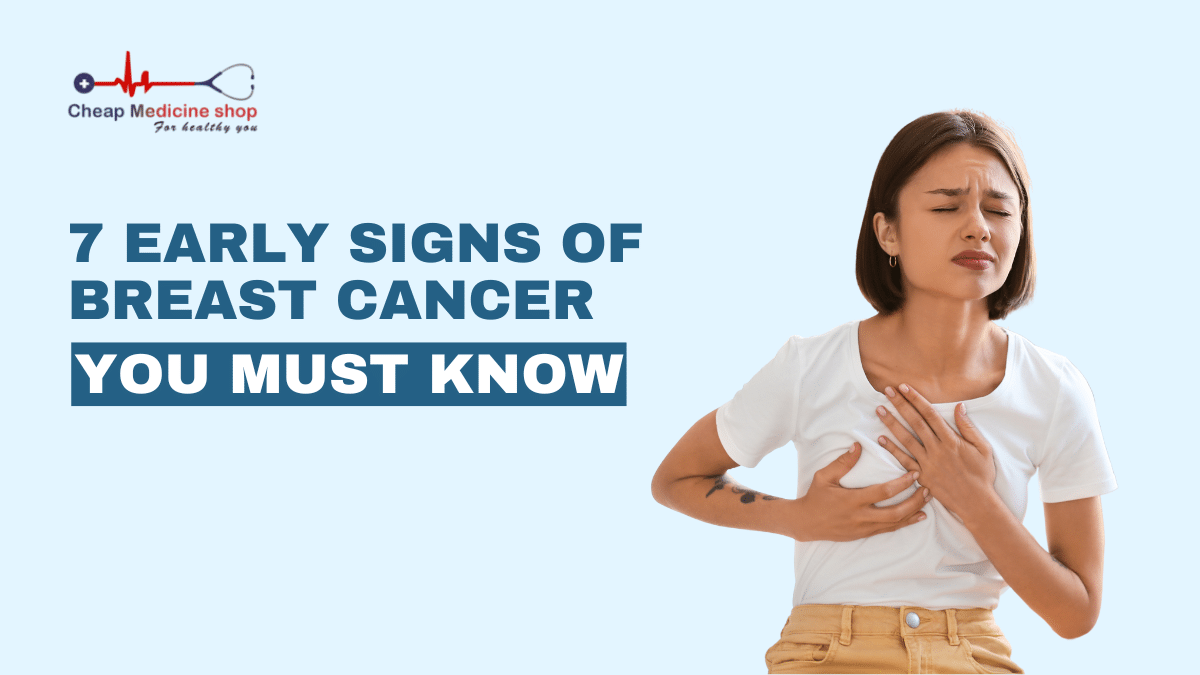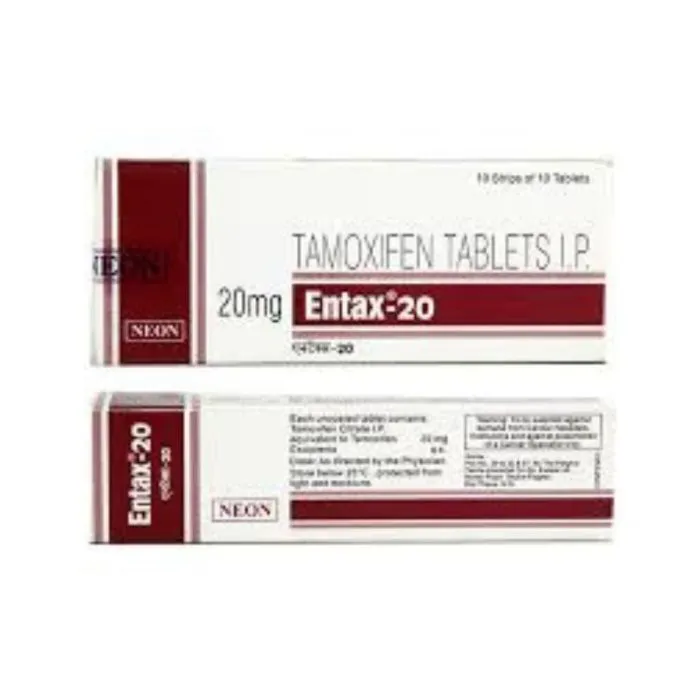Breast Cancer is a growing concern for many women in this day and age. It is one of the most common types of Cancer diagnosed in women around the world, contributing significantly to severe illness.
Beyond the physical impact, it also takes an emotional and mental toll, affecting self-image, confidence, relationships, and a woman’s overall well-being significantly.
Several factors contribute to the rising number of Breast Cancer cases, such as changes in lifestyle, environmental influences, inherited risks, and having children later in life.
Although modern screening methods and treatments have improved survival chances, identifying symptoms early still plays a key role in improving results. Being aware of the warning signs helps people seek care sooner, which can lead to more effective treatment.
In this article, we’ll learn the most common early signs of Breast Cancer in women and how it can be managed.
1) Unusual lump in the breast or underarm
A hard lump, usually painless, in the breast or underarm is one of the most recognizable early warning signs of Breast Cancer. These lumps often feel firm or irregular and usually stay fixed in place rather than moving freely.
While many breast lumps are benign (non-cancerous), a healthcare provider should assess any new or unusual lump.
2) Changes in breast size or shape
Noticeable changes in size, contour, or symmetry between breasts can be an early sign of Cancer. This might happen rapidly—within days or weeks—and may not be associated with a detectable lump. In some cases, the affected breast may feel fuller or appear misshapen. These changes can result from tumor growth or swelling caused by blocked lymphatic drainage.
3) Skin dimpling or texture changes
If the skin on your breast starts to look like the surface of an orange peel (a symptom called peau d’orange), it may suggest that Cancer is obstructing the lymphatic vessels beneath the skin. An aggressive form of Cancer, like Inflammatory Breast Cancer (IBC), often causes skin dimpling, puckering, or thickening. So, seek medical attention immediately.
4) Nipple discharge
Unexplained nipple discharge—especially if it’s bloody, clear, or sticky and comes from one breast—can sometimes indicate Breast Cancer. While discharge can also be due to hormonal fluctuations or benign conditions, persistent or unusual discharge should be evaluated. This is especially concerning if other changes like a lump or skin irritation accompany it.
5) Nipple retraction or inversion
If your nipple begins to turn inward or retract when it was previously outward, it could be due to changes in the underlying breast tissue. While not all cases of nipple inversion are Cancer-related (some are congenital or age-related), sudden changes are more suspicious. This symptom might also accompany scaling or skin changes around the nipple area.
6) Breast pain or tenderness
Breast pain (mastalgia) is not usually a classic sign of Breast Cancer, but persistent or localized pain, especially in one spot, needs medical attention.
Many women experience cyclical breast pain related to their menstrual cycle, but pain that’s new, ongoing, and not linked to hormonal fluctuations should be looked into.
7) Redness, swelling, or warmth
These symptoms are often mistaken for an infection like Mastitis (breast inflammation), especially in younger or breastfeeding women. However, they can also point to IBC, which progresses quickly. The breast may feel heavy and swollen, and appear red or purplish. This presentation requires immediate evaluation because IBC often doesn’t involve a lump.
What to do if you notice these signs
If you notice any early signs of Breast Cancer, do not panic. It’s essential not to ignore them and schedule an appointment with a healthcare expert as soon as possible for a clinical evaluation.
Not every change in the breast means Cancer, but finding problems early can lead to more effective treatment. Don’t try to diagnose yourself or wait too long to get help. Pay attention to any new or unusual symptoms and talk to a doctor immediately.
Treatment options
The following are some common treatments used to address the early signs of Breast Cancer.
Surgery: Surgery removes the tumor and possibly surrounding tissue. Options include lumpectomy (breast-conserving) or mastectomy (complete breast removal), often paired with lymph node biopsy.
Radiation therapy: Often used after surgery, radiation targets the remaining Cancer cells in the breast area to reduce the risk of recurrence. It’s commonly applied after a lumpectomy.
Hormone therapy: For hormone receptor-positive Cancers, medicines like Tamoxifen or aromatase inhibitors block hormones that help Cancer grow. It’s usually taken for 5–10 years.
Chemotherapy: Chemotherapy generally uses strong medicines to kill Cancer cells and is given before or after surgery. It’s effective but may cause side effects like fatigue and nausea.
Targeted therapy: Targeted for Cancers with specific markers like HER2, which attacks Cancer cells while sparing healthy tissue. Often combined with chemotherapy.
Immunotherapy: Mostly for aggressive types like triple-negative Breast Cancer, immunotherapy helps the immune system detect and destroy Cancer cells more effectively.
Active surveillance: In some early cases of Breast Cancer, doctors may choose to observe the condition rather than begin treatment right away. They can closely monitor any changes through routine checkups and imaging tests and decide if or when treatment is needed.
Conclusion
Recognizing early signs of Breast Cancer, such as a new lump, changes in breast shape, nipple discharge, or skin dimpling, is key to timely diagnosis and better treatment outcomes. While not every symptom indicates Cancer, it’s crucial to consult a healthcare provider if you notice anything unusual.
Early-stage Breast Cancer is often treated with options like surgery, radiation therapy, or hormone therapy, depending on the specific case. In some early cases, active surveillance may be recommended instead of immediate treatment.
The goal is to address the condition before it progresses, reducing long-term risks. Staying aware, attending regular checkups, and acting promptly when something feels off can significantly improve overall health and recovery.
Frequently Asked Questions
What does cancerous breast pain feel like?
Cancerous breast pain is often described as a persistent ache, tenderness, or a burning sensation. It may feel different from normal hormonal breast pain and usually affects one specific area. If the pain doesn’t go away or is accompanied by other changes, see your doctor for evaluation.
Can I live 20 years after Breast Cancer?
Yes, many people live 20 years or more after a Breast Cancer diagnosis. Early detection, effective treatment, regular checkups, and healthy lifestyle choices play a significant role. Survival rates are high, around 80–90%, especially when the Cancer is detected early and managed well.
What is the latest treatment for Breast Cancer?
The latest treatments for Breast Cancer include targeted therapies like Trastuzumab-Deruxtecan and immunotherapy for triple-negative cases.These advanced options are designed to attack Cancer cells more precisely, improving survival rates and reducing side effects compared to traditional treatments.
Is weight loss an early sign of Breast Cancer?
No, weight loss is not typically an early sign of Breast Cancer. However, unexplained weight loss can occur in more advanced stages. If you’re experiencing sudden weight loss along with other symptoms like breast changes or fatigue, consult a healthcare provider for evaluation.
Cheap Medicine Shop only refers to credible, authoritative sources for our content. If you’re curious about how we ensure the integrity of our content, we encourage you to read our Content Information Policy.


















